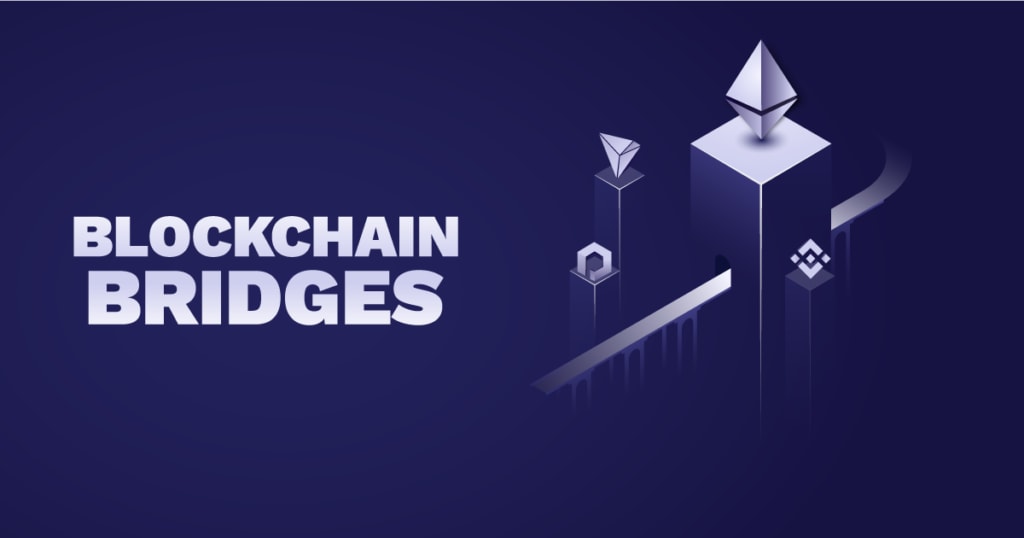
What is a blockchain span(bridge)?
A blockchain span (also called a cross-chain span), like an actual scaffold, interfaces two focuses. It works with correspondence between two blockchain networks by supporting the exchange of information and computerized resources. The two chains might have particular conventions, rules, and administration structures, yet the extension gives a protected means to the two chains to interoperate (i.e., impart and share information). Blockchain scaffolds can be intended to trade any kind of information, including savvy contract calls, decentralized characters, Bridge Smart Contract Development Services off-chain data like financial exchange value feeds, and significantly more.
We should investigate explicit advantages presented by blockchain spans.
Cross-chain exchange
Each blockchain is made in a safeguarded biological system with its own arrangement of rules and agreement conventions, bringing about constraints for each blockchain. Therefore, there is no immediate correspondence or token exchange between blockchains. Blockchain spans, then again, empower the exchange of tokens and data starting with one chain then onto the next.
Low organization traffic
Blockchain spans help to limit traffic on clogged blockchains, like the Ethereum environment, and circulate it over other, less swarmed blockchains, improving the Ethereum organization’s adaptability.
Upgraded designer experience
Engineers making DApps on the Ethereum network have frequently had a negative encounter because of slow exchange handling rates and high gas charges, especially during times of high traffic and clog. Nonetheless, blockchain spans empower those equivalent tokens to be handled on other blockchains quicker and at a lower cost. Designers from various blockchains keep on cooperating to make new client stages.
Obstruction to restraining infrastructure
Cross-affix innovation likewise adds to showcase solidness by lessening imposing business model by significant substances. Bitcoin and Ethereum, for instance, are the most well known digital currencies, representing over 70% of the general piece of the pie. Because of this mastery, there is little room on the lookout for new organizations to test their strategies and get a traction in the current rivalry.
How do blockchain spans work?
How about we consider a model with two blockchain networks: Chain An and Chain B.
While moving tokens from Chain A to Chain B, the scaffold can be intended to lock the token on Chain An and mint another one on Chain B. In this situation, the all out number of coursing tokens stays steady yet is isolated across the two chains. In the event that Chain A held fifteen tokens and, moved five tokens to Chain B, Chain A would in any case have fifteen tokens (with five tokens locked), Cross chain bridge development yet Chain B would have five more.
The proprietor of the stamped tokens can reclaim them whenever; they can consume (or obliterate) them from Chain B and open (or delivery) them on Chain A. Since Chain A has generally had a locked duplicate of every token, its worth remaining parts steady with the Chain A market cost. This “lock-and-mint” and “consume and-discharge” methodology guarantees that the amount and cost of tokens moved between the two chains stay consistent.
What are a few unique sorts of blockchain spans?
Blockchain extensions can be ordered into two classes: trust-based spans and trustless scaffolds.
Trust-based spans
Trust-based spans, otherwise called alliance or custodial scaffolds, are concentrated extensions that require a focal substance or organization of middle people to run. To change over coins into another cryptographic money, clients should depend on the individuals from the league to check and affirm the exchange. The alliance individuals are generally boosted to keep exchanges running; they are not centered around distinguishing and forestalling misrepresentation. Trust-based scaffolds can be a fast and financially savvy decision while moving an enormous amount of digital currency. Nonetheless, it’s essential to comprehend that alliance individuals are generally boosted to keep exchanges running, not to distinguish and forestall misrepresentation.
Trustless scaffolds
Trustless scaffolds are decentralized extensions that rely upon machine calculations (i.e., shrewd agreements) to work. This sort of extension works like a genuine blockchain, with individual organizations adding to exchange approval. Trustless extensions can furnish clients with a superior feeling that everything is good and furthermore greater adaptability while moving digital money.
We should take a gander at a few explicit instances of blockchain spans.
Binance Bridge
The Binance Bridge empowers clients to move resources between the Binance Chain and different chains, Build a cross chain bridge for example, Ethereum, utilizing Binance Smart Chain wrapped tokens. The Binance Smart Chain (BSC) is an Ethereum-viable blockchain that supports savvy contracts similarly as Ethereum does yet at a lower cost. BSC utilizes BEP20 standard tokens.
Entry by Wormhole
Gateway offers limitless exchanges of resources among Solana and a few other DeFi blockchains, for example, Ethereum, Terra, Binance Smart Chain, Avalanch, desert spring, and Polygon.
Wrap Protocol (Plenty Bridge)
The Wrap Procol, which as of this composing will before long be rebranded as the Plenty Bridge, can be utilized to move ERC20 and ERC721 tokens between the Tezos organization and Ethereum, Polygon, and BSC. The Tezos blockchain utilizes approving hubs known as pastry specialists to carry out its verification of-stake agreement calculation.
Torrential slide Bridge
The Avalanche Bridge (AB) can be utilized to move resources between the Avalanche evidence of-stake blockchain and Ethereum. As per the documentation, an Avalanche exchange on AB will require a couple of moments, while an Ethereum exchange might require as long as 15 minutes.
How do blockchains convey?
Interoperability alludes to the limit of blockchains, what share a similar fundamental engineering, to speak with each other to work with data sharing. It is the ability to notice and access information put away in another blockchain. With interoperability, Build a token bridge when data is conveyed to another blockchain, a client on the opposite side might get to it, and respond actually.
About the Creator
Sandyzakk
Enter and create digital economies, leveraging blockchain technology with our Metaverse development services. Design, build, and launch amazing experiences for your users effectively with a leading metaverse development company.






Comments
There are no comments for this story
Be the first to respond and start the conversation.